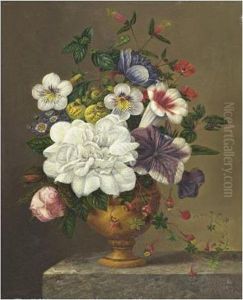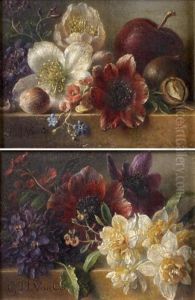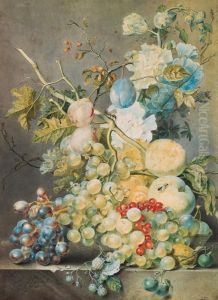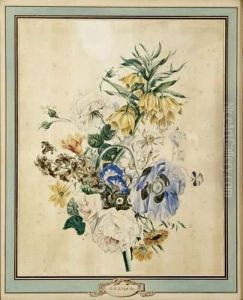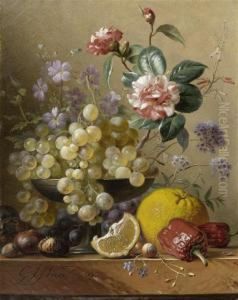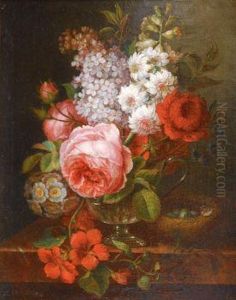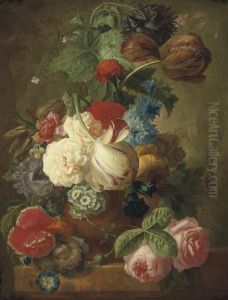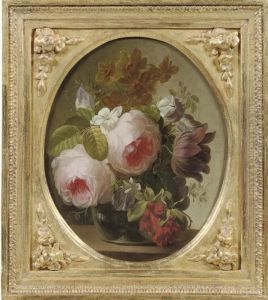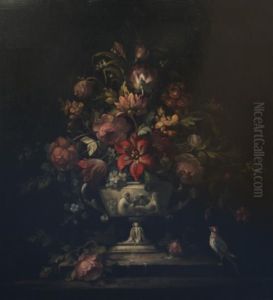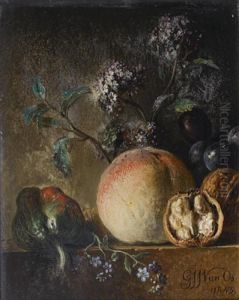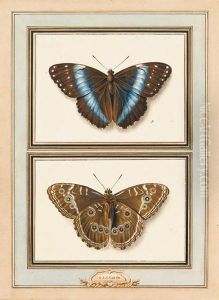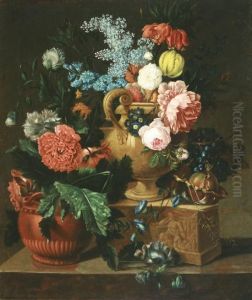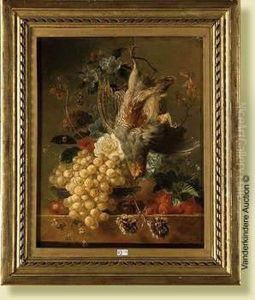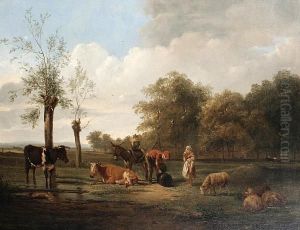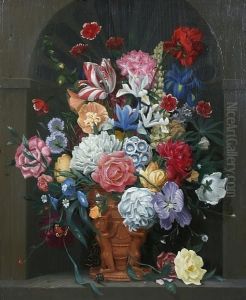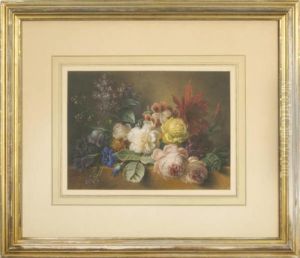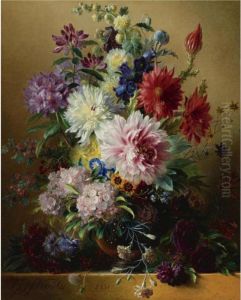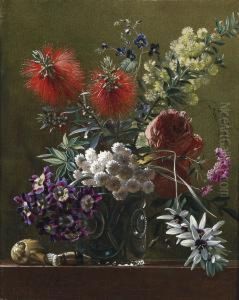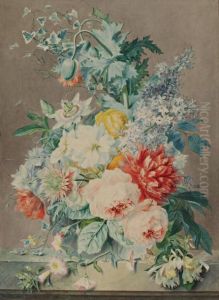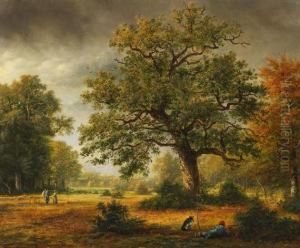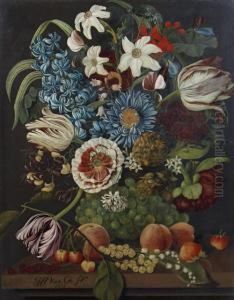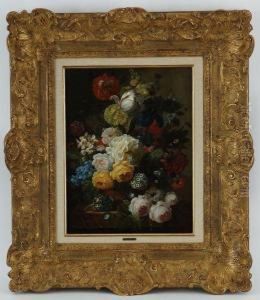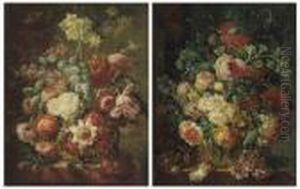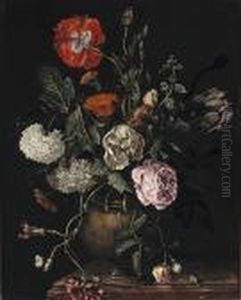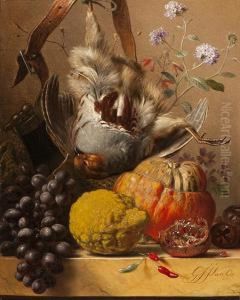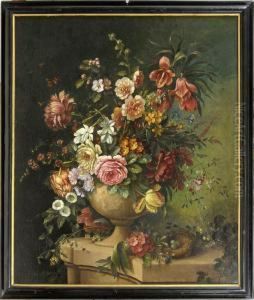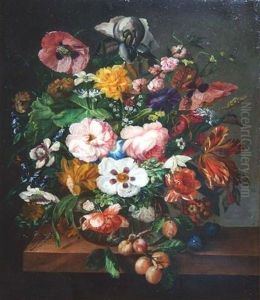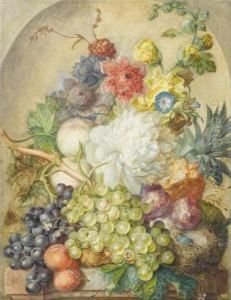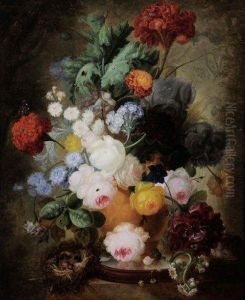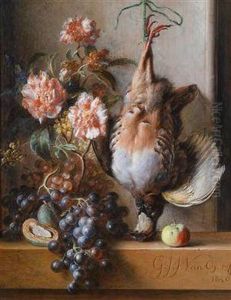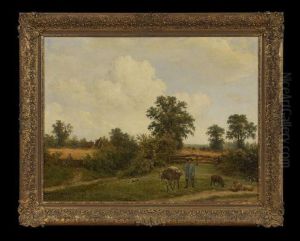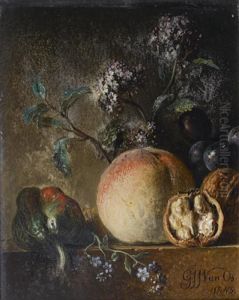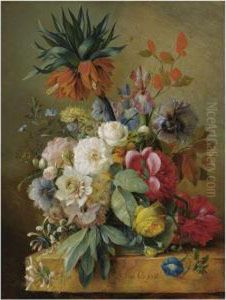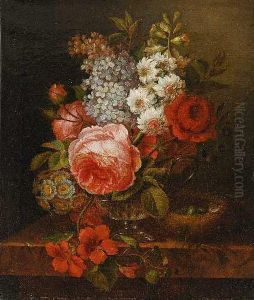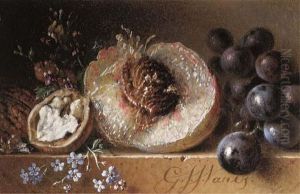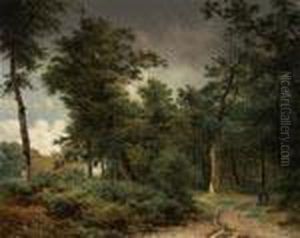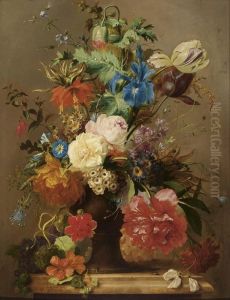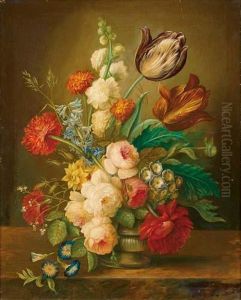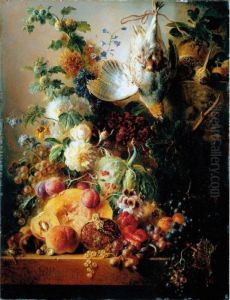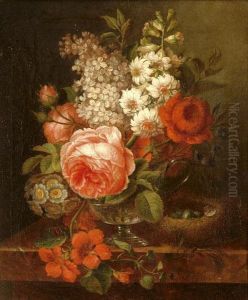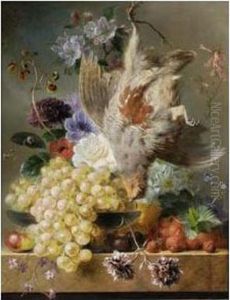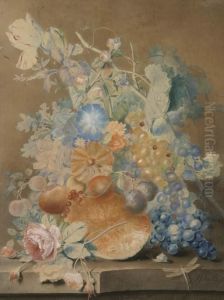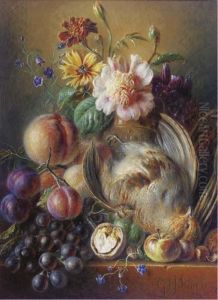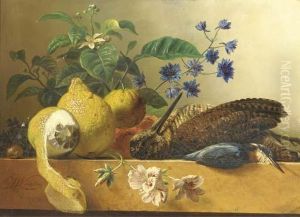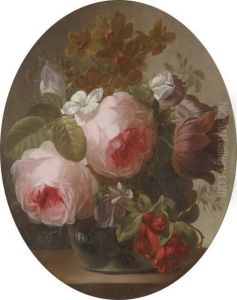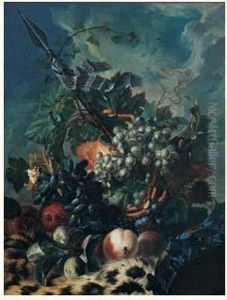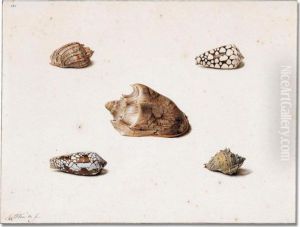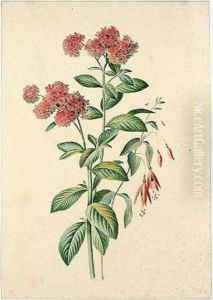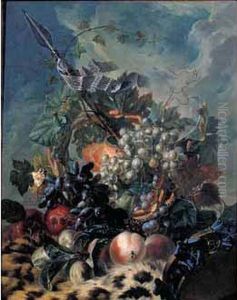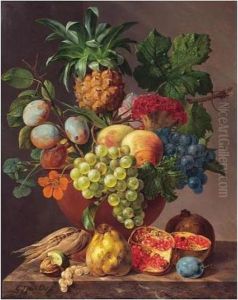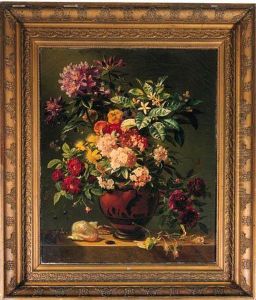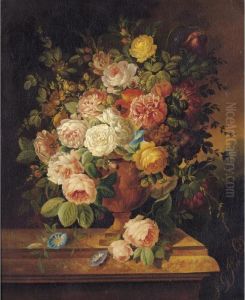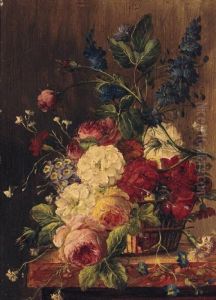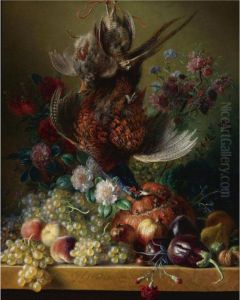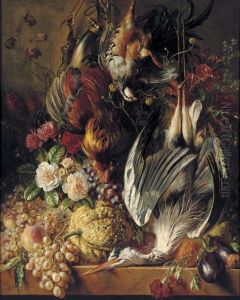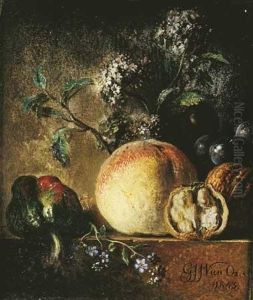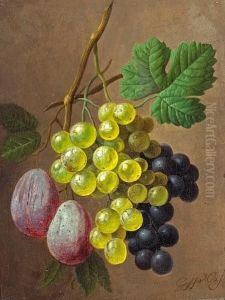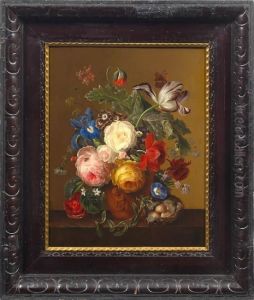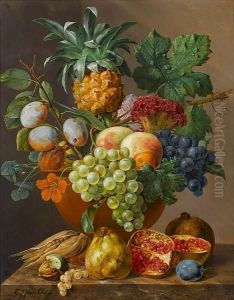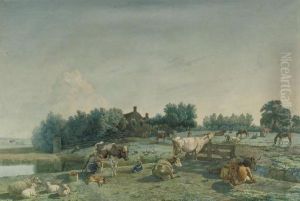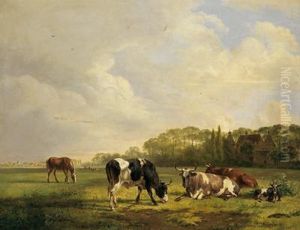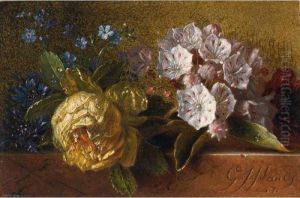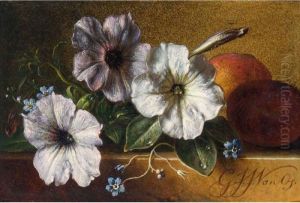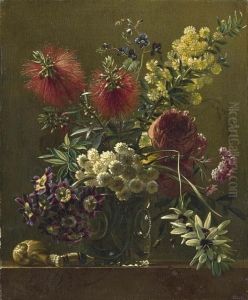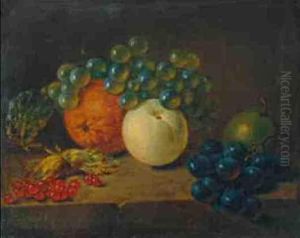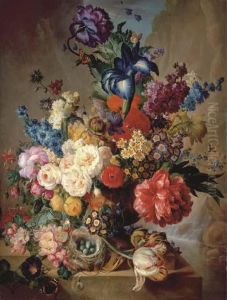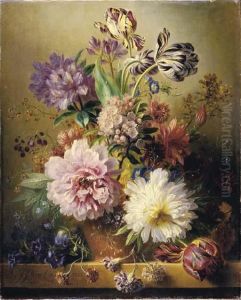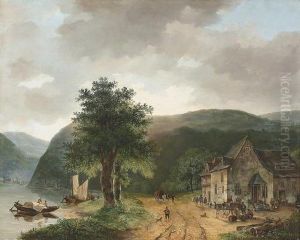Georgius Jacobus J. Van Os Paintings
Georgius Jacobus Johannes van Os, known as George Jacobus van Os, was a Dutch painter born on February 4, 1782, in The Hague, Netherlands. He was recognized for his skill in flower painting and still lifes. His work is characterized by its precision and vibrant use of color, often depicting lush floral arrangements and fruit compositions.
Van Os was born into an artistic family; his father, Jan van Os, was also a renowned painter, particularly of flowers and fruit, and his mother, Susanna de la Croix, was an accomplished artist as well. Under the tutelage of his father, George Jacobus developed a strong foundation in painting techniques and an appreciation for nature's beauty, which would heavily influence his artistic career.
In his early years, van Os continued to hone his skills and develop his unique style. He moved to Paris in 1809, which was then the hub of the art world. There, he was exposed to the works of the Old Masters and contemporary artists, which further influenced his painting style. In Paris, van Os' talent was recognized, and he gained patronage from notable figures, including members of the French royal family.
Throughout his career, van Os exhibited his work at the Paris Salon, where he received critical acclaim and was awarded several medals for his exceptional still lifes. His paintings were highly sought after and collected by art enthusiasts and patrons across Europe.
Moreover, van Os was also known for his contributions to the decorative arts, providing designs for the Sèvres Porcelain Factory. His designs were well-received, and his collaboration with Sèvres helped to elevate the prestige of porcelain artistry during that period.
Van Os' legacy is one of mastery in the still life genre. His ability to capture the texture of petals, the translucency of fruit, and the interplay of light and shadow was remarkable. His works can be found in various museum collections, including the Louvre in Paris and the Rijksmuseum in Amsterdam.
George Jacobus van Os passed away on July 24, 1861, in Paris, France. His contributions to Dutch and French art have made him a respected figure in the history of European painting, particularly in the development of still life as a prominent genre in the 19th century.
